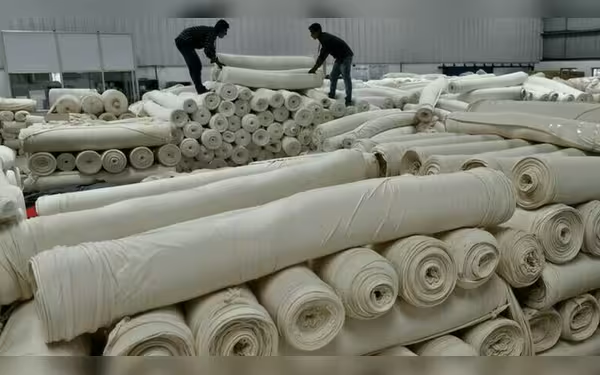Thursday, November 7, 2024 10:07 AM
Textile Financing Challenges Amidst High Value-Added Growth in Pakistan
- HVA textile financing stagnates despite export growth.
- LVA segments see increased borrowing amid production decline.
- Rising energy costs impact low-value-added industries.
 Image Credits: brecorder
Image Credits: brecorderPakistan's textile sector faces financing challenges despite high value-added growth, while low value-added segments see increased borrowing.
In recent years, Pakistan's textile and apparel export sector has witnessed a remarkable transformation, particularly in the high value-added (HVA) segments such as readymade garments. This growth has not only outpaced the low value-added (LVA) segments, like yarn and greige fabric, but has also shown resilience against challenges such as rising production costs and price pressures. However, a puzzling trend has emerged: while HVA exports have increased in both volume and value, the working capital financing for these industries is experiencing a downturn.
To clarify, HVA segments include finishing, made-up textiles, and wearing apparel, whereas LVA segments are limited to spinning and weaving mills. Historically, HVA segments have received only about 40 percent of total textile lending, with a significant portion of their working capital coming from export-based trade financing, which has averaged around 70 percent. This reliance on concessional export refinance loans has been a staple for HVA industries.
However, over the past two years, the total working capital financing for HVA segments has stagnated at approximately Rs 550 billion. With the closure of concessional export refinancing options, HVA industries are now turning to commercially priced loans, such as pre-shipment foreign currency FE-25 loans and post-shipment bill discounting lines. Despite this shift, the overall trade-based export financing for HVA textiles has decreased, with a notable drop of Rs 44 billion in EFS-based financing.
In contrast, the LVA industry has seen a healthy increase in working capital borrowing, rising by more than 18 percent during the same period. While LVA segments still account for a smaller share of export-based trade financing, their borrowing has outpaced that of HVA segments in nearly every category, except for FE-25/FCY loans. This raises several questions about the dynamics of the textile industry.
Interestingly, production trends indicate that LVA segments have been struggling, with cotton yarn and cloth production hitting a 20-year low. The low-value-added spinning and weaving industries, particularly small and medium enterprises, have faced significant challenges due to rising energy tariffs, declining cotton production, and reduced domestic demand. Historically, these industries have not enjoyed the same access to concessional financing as their HVA counterparts, relying instead on commercially priced cash and running finance.
Some may argue that the working capital needs of LVA industries have surged, but this assertion does not hold up under scrutiny. The price of raw cotton has stabilized, and local production has declined, suggesting that working capital requirements should be lower, not higher. Conversely, the demand for working capital in HVA industries should have increased due to the depreciation of the Pakistani Rupee, which has lost nearly 26 percent of its value in the past two years. Additionally, a higher volume of exports typically indicates a need for more working capital.
The current state of working capital financing in Pakistan's textile sector presents a complex picture. While HVA segments have shown impressive growth, their financing options are dwindling, raising concerns about their future sustainability. On the other hand, LVA segments are experiencing a resurgence, albeit with limited access to trade financing. As the industry navigates these challenges, it is crucial for stakeholders to reassess their strategies and explore innovative financing solutions to ensure the continued growth and competitiveness of Pakistan's textile and apparel sector.













